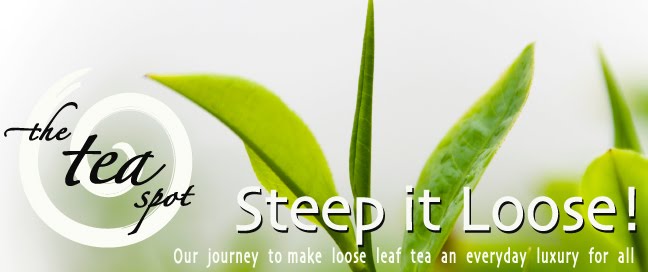In the past few months I think our entire country has been slightly if not incredibly more stressed than we have ever been. We're unsure of our job stability, how to pay bills, how to keep costs down and even worried about keeping a roof over our heads. In these times it may seem selfish to take out time for yourself, but no one is benefiting from you being so stressed that you can't do anything effectively.
Therefore I'm suggesting 3 ways in which to take time for yourself, within 10 -30 min that you can do, GUILT FREE, so that you can rejuvenate yourself.
1) Go for a walk.

Simple enough, possibly seems like a useless waste of time, but trust me it'll work. Leave your cell phone at home, maybe even leave the dog at home, bundle up if it's cold and go take a walk for 10 minutes, 30 minutes or an hour, whatever you prefer. During this time don't just think about all that you have to do, take time to enjoy the scenery, yourself and clearing your mind, GUILT FREE. If you're in the country, look at the sky, the gardening in a neighbor's yard, the snow on the ground. Inhale deeply, feel the air on your face, touch the trees as you pass by, really enjoy this with all of your senses. In the city? Take time to look at the architecture, watch how other people act and think about how their reality is different from your own, think about the simplicity of this act of just walking in a bustling metropolis. This walk will clear your mind and get you ready to take on whatever the day throws at you next.
2) Take a bath.

Now this one is hard for me because it doesn't always make sense to take a bath, but time alone in a bath will sooth your body, your mind, and give you time for reflection. When you are setting up the bath, look around your cupboard. See if you have any herbs or teas that you can add for aromatherapy. A great tea that I'll use in a bath is a cup of
Meditative Mind. It is a blend of white tea, jasmine pearls and rosebuds, the combination of which creates a soothing and calming aromatherapy best used when stressed, under anxiety or depression. With this in place, you'll be able to tune out the world for a while, GUILT FREE. Focus on your breathing, be aware of your body and reflect on the things you do have in life, be it your family, your health, a smile someone sent your way, an old friend you haven't contacted. Think about what is truly important and you'll be able to clear away the clutter of everything that isn't.
3) Make your favorite meal, drink or dessert.

Oftentimes we eat on the run, when it's convenient, or are making meals to satisfy other peoples needs and wants. This time, I want you to take the time to make something for yourself, GUILT FREE. If your favorite dish is brownies, go ahead and make some. If you've been craving a steak, go ahead and put together a fantastic rub, use tea leaves if you have some, and then enjoy it alone or with whatever sides you prefer. If you'd love to have a smoothie or a milkshake, have it! In our society we've become so afraid of food, calories, what is in our meals that food, in it of itself is stressful. Go back to the mindset of when you were a kid and didn't care about food. What did you LOVE to eat? Take some time to put love back into the meal that you choose and savor every bite. This way, instead of falling into the vicious cycle of eating because you're stressed and stressed because you're eating, you'll actually feel more productive because YOU made something, you made something YOU wanted to, and YOU were able to take the time to enjoy it.
Images taken from: http://www.llethrydbarns.co.uk/images/Llethrydcwm.jpg
http://piesandbass.wordpress.com/2007/12/11/dark-indulgent-chocolate-brownies/

 The Soft Grip Tea Thermal (photo above) is a 14 oz. to-go- double-wall mug with removable infuser, sip through lid and soft grip sides. Retailing for $19.99 sounds like a reasonable price when steeping tea on-the-go and keeping it hot & cold.
The Soft Grip Tea Thermal (photo above) is a 14 oz. to-go- double-wall mug with removable infuser, sip through lid and soft grip sides. Retailing for $19.99 sounds like a reasonable price when steeping tea on-the-go and keeping it hot & cold. A similar product made of Stainless Steel, for those of you that want to stay away from plastic, is also available. The Stainless Steal Thermal (photo above) is a non-slip silicone grip stainless steel mug with a removable infuser cap allowing you to pour hot water directly over the loose leaf tea or teabag. The coolest part of the mug is its' twist-to-stop steeping feature that is incorporated in the sip-through lid.
A similar product made of Stainless Steel, for those of you that want to stay away from plastic, is also available. The Stainless Steal Thermal (photo above) is a non-slip silicone grip stainless steel mug with a removable infuser cap allowing you to pour hot water directly over the loose leaf tea or teabag. The coolest part of the mug is its' twist-to-stop steeping feature that is incorporated in the sip-through lid..jpg)



























 , Jian Huang 2, Xing Xie 3, C. D'Arcy J. Holman 1
, Jian Huang 2, Xing Xie 3, C. D'Arcy J. Holman 1 10 g fresh mushrooms and
10 g fresh mushrooms and 












